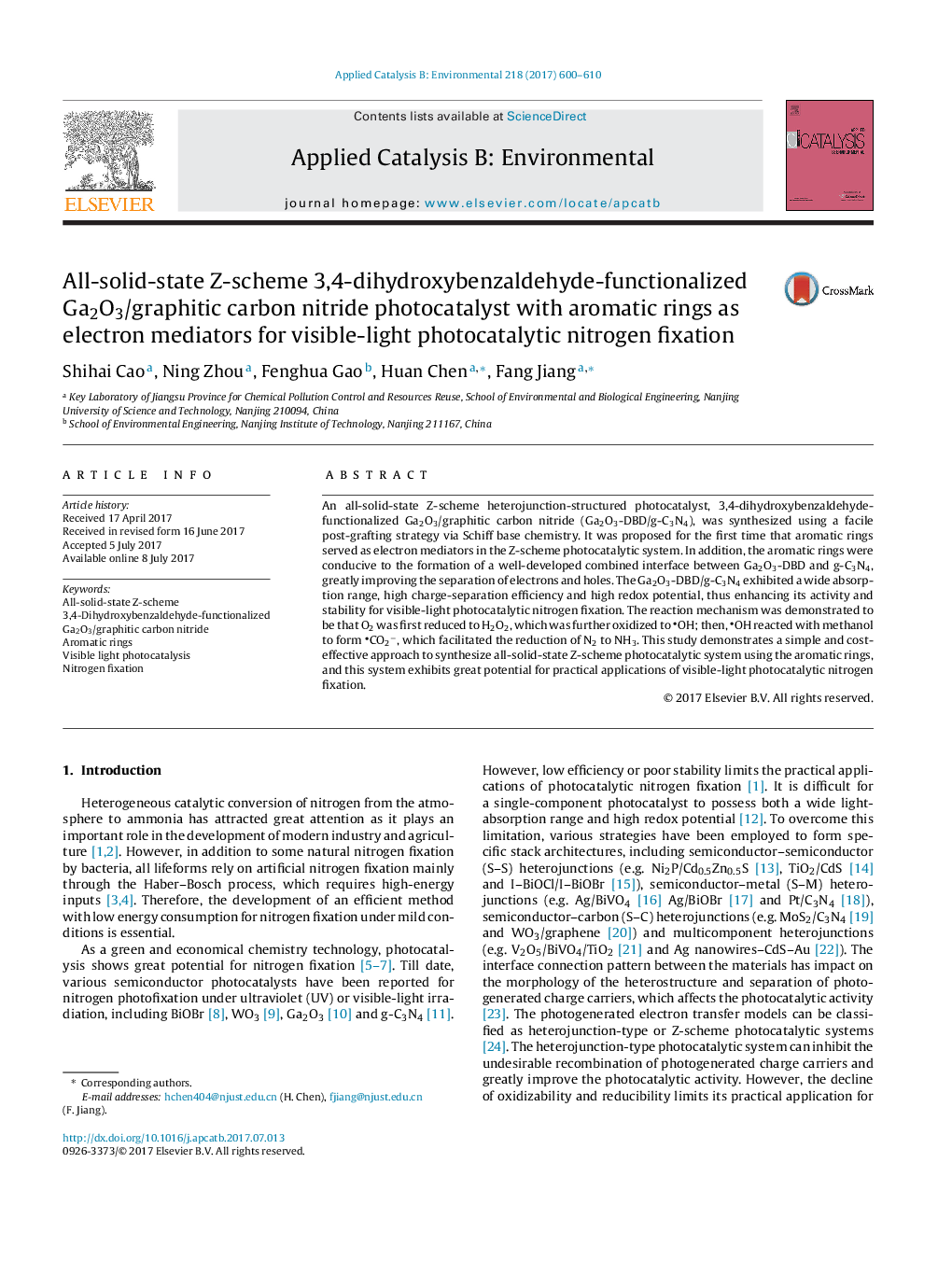| Article ID | Journal | Published Year | Pages | File Type |
|---|---|---|---|---|
| 6453806 | Applied Catalysis B: Environmental | 2017 | 11 Pages |
â¢Z-scheme Ga2O3-DBD/g-C3N4 photocatalyst was synthesized via Schiff base chemistry.â¢Aromatic rings favor formation of well-combined interface of Ga2O3-DBD and g-C3N4.â¢Aromatic rings were acted as electron mediators in Z-scheme Ga2O3-DBD/g-C3N4.â¢Ga2O3-DBD/g-C3N4 has wide absorption range and high activity in nitrogen fixation.â¢CO2â is the major species in nitrogen fixation over Ga2O3-DBD/g-C3N4.
An all-solid-state Z-scheme heterojunction-structured photocatalyst, 3,4-dihydroxybenzaldehyde-functionalized Ga2O3/graphitic carbon nitride (Ga2O3-DBD/g-C3N4), was synthesized using a facile post-grafting strategy via Schiff base chemistry. It was proposed for the first time that aromatic rings served as electron mediators in the Z-scheme photocatalytic system. In addition, the aromatic rings were conducive to the formation of a well-developed combined interface between Ga2O3-DBD and g-C3N4, greatly improving the separation of electrons and holes. The Ga2O3-DBD/g-C3N4 exhibited a wide absorption range, high charge-separation efficiency and high redox potential, thus enhancing its activity and stability for visible-light photocatalytic nitrogen fixation. The reaction mechanism was demonstrated to be that O2 was first reduced to H2O2, which was further oxidized to OH; then, OH reacted with methanol to form CO2â, which facilitated the reduction of N2 to NH3. This study demonstrates a simple and cost-effective approach to synthesize all-solid-state Z-scheme photocatalytic system using the aromatic rings, and this system exhibits great potential for practical applications of visible-light photocatalytic nitrogen fixation.
Graphical abstractDownload high-res image (129KB)Download full-size image
